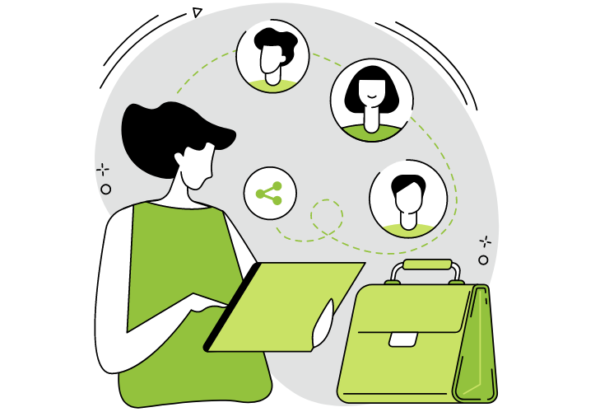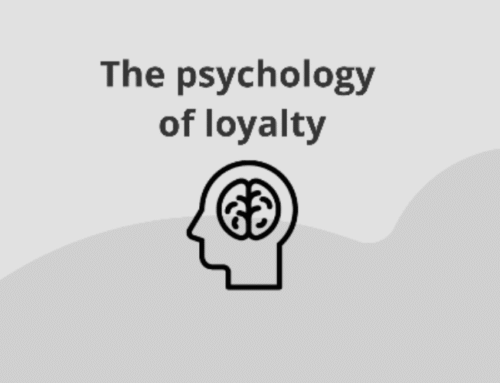Maximizing Revenue Potential:
Understanding and Implementing Customer Segmentation
Customer segmentation is the process of dividing a customer base into distinct groups or segments based on specific characteristics, such as demographics, behaviors, preferences, or needs, and variables, including age, gender, location, income, buying habits, interests, and psychographics. Customer segmentation aims to better understand and categorize customers with similar attributes, allowing businesses to tailor their marketing strategies, products, and services to meet the unique needs of each segment.
By segmenting customers, businesses can gain valuable insights into their target market, enabling them to create more personalized and relevant marketing campaigns. It helps identify high-value customer segments, understand their purchasing patterns, and customize offerings to increase customer loyalty and satisfaction.
By utilizing customer journey maps, you can gain a more in-depth understanding of your customer experiences and uncover opportunities to maximize revenue potential through effective segmentation. A visual representation of the customer journey helps you understand the customer’s perspective, identify pain points, and uncover opportunities to maximize revenue potential.

Customer Segmentation vs. Market Segmentation
Customer segmentation and market segmentation are two related concepts that businesses use to understand and target specific groups of customers. While they are often used interchangeably, there are some differences in market segmentation.
Market segmentation focuses on dividing a broader market into distinct segments based on shared characteristics, preferences, or behaviors. It looks at the overall market and seeks to identify groups of customers who have similar needs, wants, or buying behaviors. Market segmentation considers factors such as demographics, geographic location, psychographics, and usage patterns. The goal is to identify segments with different characteristics and develop targeted marketing strategies to effectively reach and serve those segments. It helps businesses understand the overall market landscape and identify opportunities for growth and competitive advantage.
Here are 4 ways to successfully segment customers.
1. Ensure your loyalty program provides access to your customer data.
To maximize revenue potential, it is crucial to understand and implement an effective customer segmentation strategy. One important aspect of this process is ensuring that your loyalty program provides access to customer data.
a) Collect relevant data
A robust loyalty program should gather essential customer information, such as demographics, purchase history, preferences, and behaviors as a foundation for customer segmentation analysis.
b) Analyze data
Once you have collected the necessary data, employ analytics tools and techniques to analyze and extract insights. Identify patterns, trends, and common characteristics among your customer base.
c) Segment customers
Based on the analysis, organize customer data and divide your base into distinct segments. These segments should have similarities within each group and significant differences between them.
Common types of customer segmentation models include demographic segmentation, geographic segmentation, psychographic segmentation, technographic segmentation, behavioral segmentation, needs-based segmentation, value-based segmentation, and customer lifetime value (CLV or CLTV).
d) Tailor marketing strategies
With segmented customer groups, you can now create personalized marketing strategies that cater to the specific needs, preferences, and behaviors of each segment. Develop targeted campaigns, offers, and promotions that resonate with each group, maximizing the chances of conversion and revenue generation.
e) Refine loyalty program benefits
Leverage the insights gained from customer segmentation to refine and enhance your loyalty program’s benefits. Customize rewards, incentives, and exclusive offers based on the preferences and purchasing patterns of each segment. This personalized approach strengthens customer engagement and encourages repeat purchases.
f) Enhance customer experience
Utilize customer segmentation to improve the overall experience for each segment. By understanding their preferences and behaviors, you can optimize various touchpoints such as digital marketing, website design, user interface, customer service interactions, email marketing, and social media to meet their needs better.
Monitor and iterate: Continuously monitor the performance of your customer segmentation and loyalty program. Measure the effectiveness of your strategies by tracking metrics like customer acquisition, retention, and revenue generated from each segment. Use these insights to iterate and improve your approach over time.

2. Opt-in groups.
Opt-in groups are specific segments of your target market who have already expressed interest in your brand or specific programs and voluntarily opted to receive particular communications or participate in specific programs.
a) Loyalty members vs non-members
Segmenting your customers into loyalty program members and non-members can provide valuable insights and allow you to tailor your marketing efforts accordingly. Loyalty members have already demonstrated a higher level of engagement and are more likely to make repeat purchases. By offering exclusive benefits, rewards, and personalized promotions to loyalty members, you can encourage increased spending and foster loyalty. Non-members, on the other hand, can be targeted with incentives to join the loyalty program, highlighting the value they would receive by opting in.
b) Newsletter subscribers
Newsletter subscribers are individuals who have voluntarily signed up to receive regular updates, news, and promotions from your business. This group is interested in staying informed about your offerings and is more likely to engage with your brand. When communicating with newsletter subscribers, ensure your content is valuable, informative, and relevant to their interests. Consider segmenting this group further based on their preferences or purchasing behavior to provide more personalized and targeted content.
c) Event participants
If your business hosts events, whether in-person or virtual, participants who opt-in to attend these events form an important opt-in group. They have shown interest in engaging with your brand and are likely to be more receptive to relevant marketing messages. After the event, continue to nurture this group by sharing exclusive content, offers, or follow-up communications. Additionally, consider segmenting event participants based on the type of event they attended or their level of engagement during the event, allowing you to tailor future event invitations or promotions to their specific interests.

3. Automated journeys for critical moments.
Automated journeys for critical moments in the customer lifecycle are an effective way to engage with customers at key touchpoints. It’s important to consider the timing, frequency, and messaging relevance to ensure a positive experience. Use marketing automation tools that integrate with your data to trigger these journeys automatically based on specific events or time triggers.
a) Birthdays
Create an automated journey to celebrate customers’ birthdays. Send personalized birthday greetings, exclusive offers, or discounts to make them feel valued. You can use data from your loyalty program or opt-in information to ensure accuracy in delivering these messages.
b) Lapsed customers
Identify customers who haven’t made a purchase or engaged with your brand for a specific period and set up an automated journey to re-engage with them. Send tailored messages reminding them of the benefits of being a customer, offering incentives to return, or providing personalized recommendations based on their previous interactions.
c) Reward/loyalty progress announcements
Keep your loyalty program members engaged by setting up automated journeys to announce their progress, milestones, or upcoming rewards. Send personalized emails or push notifications to update them on their point accumulation, levels achieved, or rewards they are close to attaining. This helps maintain excitement and encourages continued participation.
d) Personalized promotions/recommendations
Utilize customer segmentation and personalized recommendations to create automated journeys that deliver relevant promotions based on individual preferences, browsing history, or past purchases. Send targeted emails or push notifications with personalized product recommendations or discounts to entice customers to make a purchase.
e) Member anniversaries
Acknowledge and celebrate the anniversaries of your loyalty program members. Create automated journeys to send personalized messages expressing gratitude for their continued loyalty. Consider offering exclusive rewards, discounts, or bonus points as a token of appreciation.

4. Manual segmentation.
Manual segmentation involves dividing your base into specific groups based on certain criteria. It’s important to note that manual segmentation based on demographics should be used with other relevant factors to create more nuanced and accurate customer segments. Combining demographic information with psychographic data (such as interests, values, and lifestyle) or behavioral data (such as purchase history or online interactions) can provide a more comprehensive understanding of your customers and enable more effective targeting.
Regularly review and update your manual segmentation as customer preferences and market dynamics evolve. Collecting and analyzing data through surveys, online interactions, or third-party sources can provide valuable insights to refine your segmentation approach over time.
Remember to adhere to privacy regulations and ensure the ethical use of data when implementing manual segmentation strategies.
a) Location
Segmenting customers based on their geographic location can help you tailor your marketing efforts to specific regions or target local preferences. This can be particularly useful for businesses with physical locations or those operating in different markets. By understanding the characteristics and needs of customers in different areas, you can create targeted campaigns, promotions, or even localized product offerings.
b) Gender
Gender-based segmentation involves categorizing customers based on their gender. This approach can be relevant for businesses with products or services that cater to specific gender preferences or demographics. By understanding gender-related purchasing patterns and preferences, you can develop marketing strategies and messaging that resonate with each group.
c) Other demographics
Manual segmentation can involve various other demographic factors such as age, income, education level, occupation, or marital status. These demographics can provide insights into customer behaviors, interests, and purchasing power. For example, a luxury brand might target customers with higher income levels. By understanding these demographic characteristics, you can customize your marketing messages, channels, and offerings accordingly.
What Are the Benefits of Customer Segmentation?
Segmentation allows you to understand and connect with your customers on a deeper level, resulting in more effective and impactful business strategies.
Targeted marketing: You can tailor your marketing efforts to specific groups that share common characteristics, which allows you to create personalized messages and offers that are more relevant and appealing to each segment. Targeted marketing increases the chances of capturing customers’ attention, resonating with their needs, and driving higher engagement and conversions.
Resource optimization: You can allocate your resources, such as marketing budget and time, more effectively. Instead of adopting a one-size-fits-all approach, you can focus your efforts on the segments that are most likely to generate the highest return on investment. This allows you to optimize your marketing strategies, reduce costs, and maximize revenue potential.
Improved product development: Customer segmentation provides valuable insights into the unique needs and preferences of different customer groups. This information can guide product development efforts, helping you create offerings that align with the specific demands of each segment. By tailoring your products to meet the requirements of different customer segments, you increase the likelihood of product success and customer satisfaction.
Competitive advantage: Effective segmentation strategies can give your business a competitive edge. By understanding your customers better than your competitors, you can differentiate your brand and offerings. You can develop unique value propositions, craft targeted marketing campaigns, and build stronger relationships with customers, making it more challenging for competitors to replicate your success.
Customer retention and loyalty: Segmentation enables you to identify and prioritize high-value customer segments, such as loyal customers or those with high lifetime value. By providing personalized experiences, exclusive rewards, and targeted retention strategies, you can enhance loyalty, reduce churn, and increase CLV.
Why bLoyal?
bLoyal offers customer segmentation software as part of its comprehensive loyalty and engagement platform. The software provides businesses with advanced segmentation options, real-time data insights, dynamic segment updates, automated customer journeys, loyalty program integration, campaign management and analytics, and customization and scalability. Furthermore, bLoyal’s customer relationship management capabilities support customer segmentation and revenue optimization by providing businesses with the tools to manage their data, deliver personalized experiences, execute targeted marketing campaigns, enhance loyalty program management, and improve customer service. By leveraging these features, businesses can maximize revenue potential by effectively segmenting customers and tailoring their strategies to meet the unique needs of each segment.




